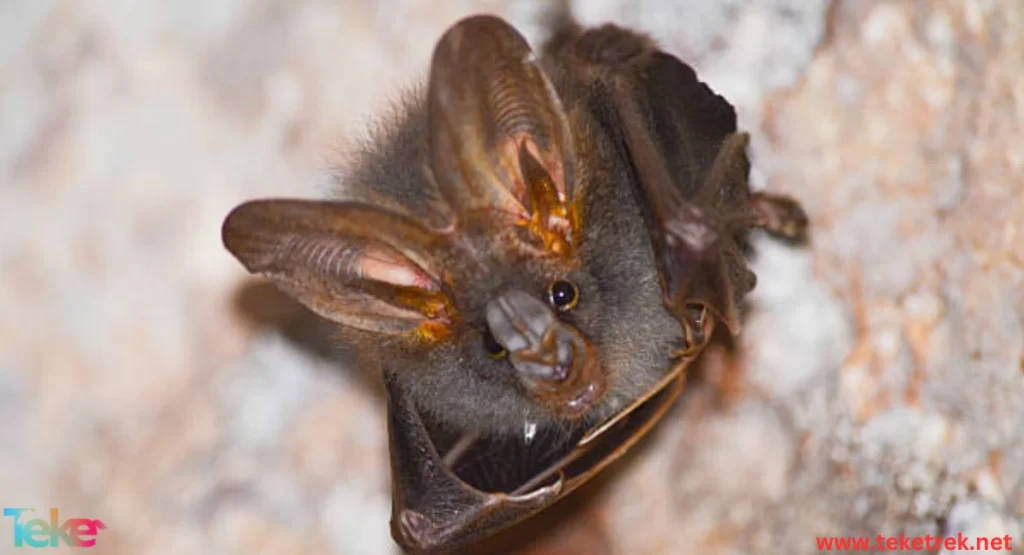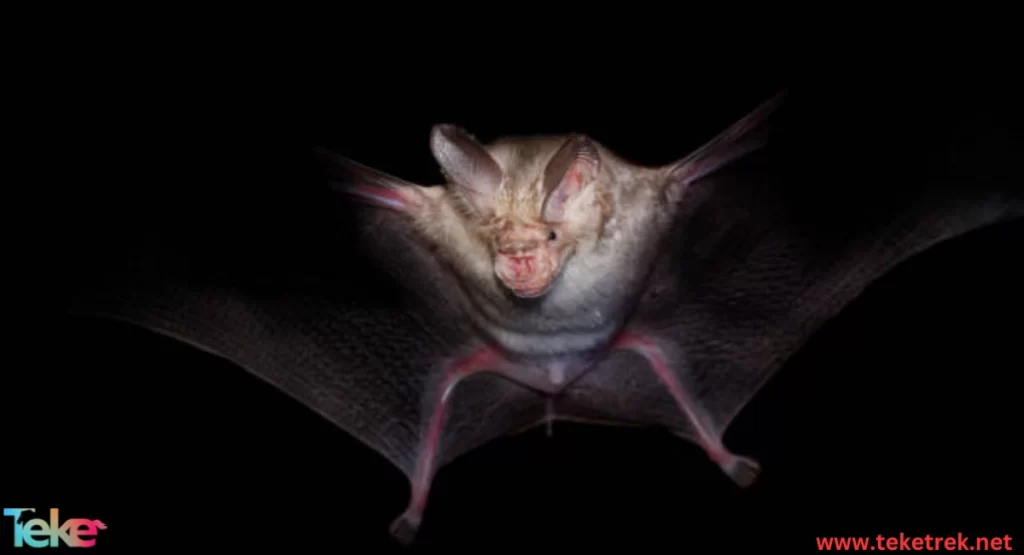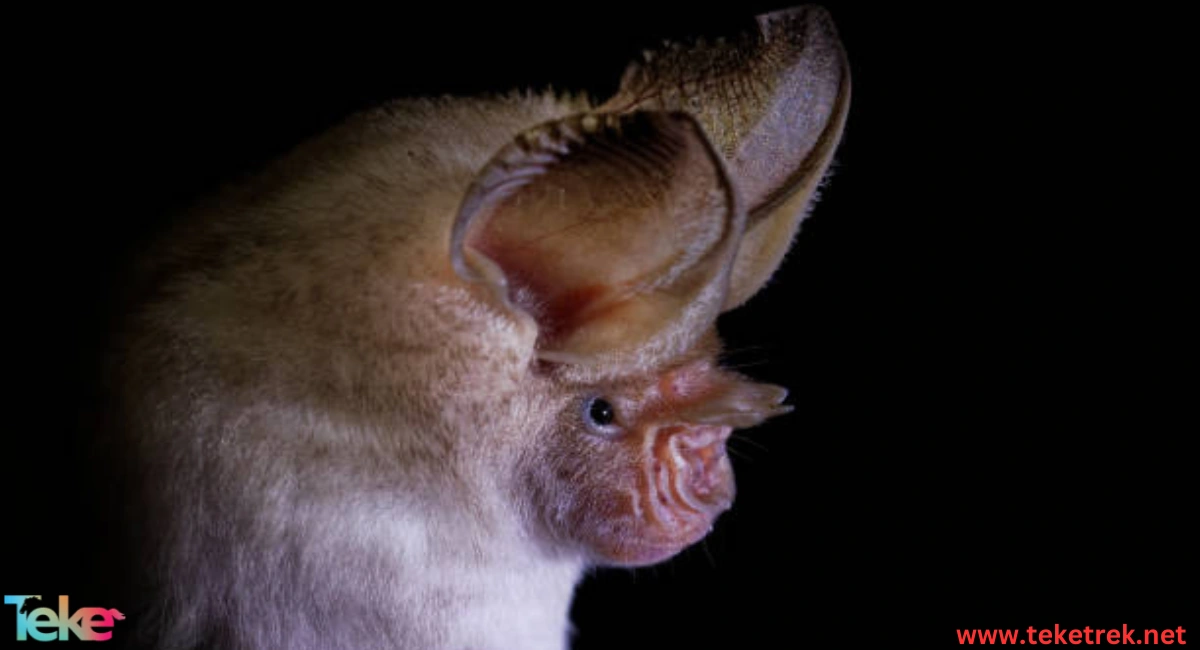The leaf-nosed bats are a unique group of mammals capable of flight.
This ability, along with their nocturnal navigation, is achieved through echolocation.
Let’s learn more about it from teketrek.
What are the characteristics of the New World leaf-nosed bats
leaf-nosed bat size and weight: The Leaf-nosed bat is characterized by its small size and slender body.
The nose: with a large circular leaf-shaped nose covering its upper part.
The Frontal gland opening: There is a cavity representing the frontal gland opening, which is more developed in males than females.
The ears: Additionally, the Leaf-nosed bat has broad ears that point forward and end in a pointed head.
The tail: as for the tail, it does not extend beyond the tail membrane.
The fur: its long thick soft fur appears in two colors within the same colony.
The color: Either grey-brown on the back and lighter on the belly, or bright orange on the back and pale on the belly.
The teeth: The number of teeth in the Leaf-nosed bat varies between 24 and 38, with small incisors located on the sides of the upper jaw and sharp cutting canines.

leaf-nosed bat fun facts
The Leaf-nosed bat belongs to the order Chiroptera, the phylum Chordata, and the class Mammalia.
Its scientific name is Hipposideros megalotis.
This type of bat is named for its leaf-shaped nose, which helps it in hunting prey.
Leaf-nosed bat habitat
The Leaf-nosed bat lives in arid ecosystems, open dry forests, as well as coastal forests in North and West Africa and Southwest Saudi Arabia.
Their presence is associated with rivers, water sources, caves, and buildings where they can adjust their body temperature during the day.
Leaf-nosed bats have been found in Yemen, Morocco, Senegal, Saudi Arabia, Mauritania, Sudan, Somalia, and South Sudan.
leaf-nosed bat diet: What does the Leaf-nosed bat eat
The Leaf-nosed bat is carnivorous, primarily feeding on insects and other arthropods.
They hunt insects that gather around lights at night, main leaf-nosed bat diet consisting of winged insects such as moths, Lepidoptera, order Coleoptera like beetles, termites, and other insect species.
Ground Squirrels: Fascinating Facts and Their Role in Nature
Leaf-nosed bat’s Reproduction Stages
The mating season for the Leaf-nosed bat begins in the rainy season, and the gestation period lasts for approximately 100 to 150 days.
A female Leaf-nosed bat gives birth to one offspring per year.
When a female bat gives birth, the offspring’s weight is around 25% to 30% higher than the mother’s weight.
The mother can identify her young among many others through their unique smell and sound.
When born, the baby bat is born blind, deaf, hairless, and with undeveloped wings.

FAQs about the Leaf-nosed bat
- How does the Leaf-nosed bat climb trees?
The Leaf-nosed bat has wings made up of membranes similar to human skin. It uses its fingers to climb trees, leaving the thumb free.
- What is the ecological significance of the Leaf-nosed bat?
The Leaf-nosed bat is important in ecological systems for pollinating flowers and dispersing seeds, as many tropical plants rely heavily on bats for these services.
- How do Leaf-nosed bats spend their day?
They walk on their hind legs with their wings hanging down, and during rest, they hang upside down by their legs and wings.
- What is the lifespan of a Leaf-nosed bat?
The Leaf-nosed bat lifespan is between 20 to 32 years.
- Why do bats have leaf noses?
Because these bats echolocate nasally, this “nose-leaf” is thought to serve some role in modifying and directing the echolocation call.Similar nose leaves are found in several other bat groups, most notably among the Old World leaf-nosed bats.
In conclusion, the Leaf-nosed bat is important to emphasize the significance of this nocturnal animal that feeds on various insects and rodents, helping to control their populations and contributing to ecological balance. Additionally, the Leaf-nosed bat aids in pollination between flowers.
References:
Wikipedia





